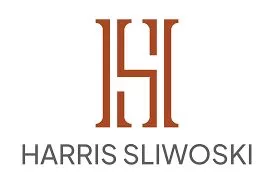- within Antitrust/Competition Law, Employment and HR and Technology topic(s)
One of the more significant AI copyright cases pending in the U.S., Thaler v. Perlmutter, is scheduled for oral argument before the D.C. Circuit Court of Appeals next month. It's an appeal of a case the appellant, Stephen Thaler, lost in the U.S. District Court for the District of Columbia.
I await oral argument and the eventual decision by the Court of Appeals with a combination of resignation and low-level dread because this is not simply an instance of bad facts making bad law, but rather a case of ill-advised, easily avoidable facts likely making horrendous law that badly distorts critical issues in assessing the copyrightability of AI-assisted artwork.
Thaler developed software ambitiously named The Creativity Machine, which could transform text prompts into works of visual art using various AI models and techniques. One such work, a digital painting called "A Recent Entrance to Paradise," was denied registration on the grounds that its creation lacked the requisite level of human involvement to be considered a protectable "Writing" by an "Author," as set forth in the U.S. Constitution and further in the Copyright Act. The Copyright Office declined to register the painting because it lacked human authorship and instead, as the district court put it, the painting was a "work generated autonomously by a computer."
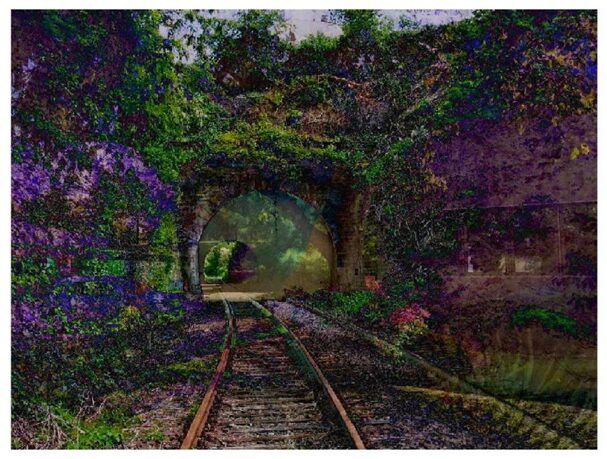
"A Recent Entrance to Paradise," a digital artwork Thaler created with AI, was denied a copyright because he insisted to the Copyright Office the image was autonomously created by a computer program with no human involvement. As a matter of administrative law and the review of agency decision making, his attempt in front of the district court to try a different approach was unavailing.
By the time the case was in district court on review of the Copyright Office refusal, Thaler realized that he had doomed himself—and maybe the rest of us using AI for image creation—by insisting from the outset the painting was created independently by "a computer algorithm running on a machine." In court, Thaler tried to reverse course, arguing that he had "provided instructions and directed his AI to create the Work" and that "the AI is entirely controlled" by him. These statements directly contradict the administrative record from the proceedings of the Copyright Office, however, and, pursuant to well established administrative law, could not be considered by the court, which chided Thaler for being "too late" to adopt a different strategy.
One wonders if Thaler's ego or ambition, as the developer of the software, steered him in the direction of hyping the software's "completely autonomous" nature. Doing so created a false narrative that assured his copyright application would fail, setting the stage for the almost certain affirmance of the district court by the DC Circuit, which will give us a Circuit-level decision that AI art is not copyrightable because the human contribution to the work is too minor and incidental.
But anyone who has dabbled even a little with the creation of AI art knows that digital artwork like this is not generated autonomously by a computer. To paraphrase a footnote in the district court's opinion, if sentient, autonomous non-humans are asserting their legal rights, our society has much bigger issues to deal with than copyright.
Similarly, it's one thing to offer descriptions like courts do of how the technology functions, which tend to emphasize the non-human aspects of the process, while it is another thing entirely to talk about what using the software is really like.
This excerpt from a well-researched Note in a 2023 edition of the Houston Law Review is a good example of the former:
AI art generators use a combination of deep learning and machine learning algorithms to translate text prompts into images. The provided prompt is compared with massive datasets to determine which images correspond to the objects or aspects in the prompt. Then, the AI generator uses several algorithms to deconstruct the images it selects, reassembling them into something a human can recognize.
When descriptions of AI's artmaking process like these, while concise and factually accurate, are the primary basis on which courts make copyright decisions, the true character of the dynamic between human and AI in producing the art is obscured if not lost entirely. In Thaler's case, the blame lies with his legal strategy because he as much as forced the district court to reject his application on behalf of an allegedly autonomous AI.
A More Nuanced Approach to AI-assisted Art? Sort of.
Had Thaler wanted to, he could have taken a different tack. For whatever reasons, he chose to (mis)represent to the Copyright Office that his Creativity Machine was solely responsible for the digital painting he sought to protect. Instead, he could have tried to copyright his own human contributions to the AI-assisted art, like Kristina Kashtanova did with her 2022 comic book Zarya of the Dawn.
To be fair, Kashtanova did not initially disclose that the illustrations in her comic were produced using Midjourney, one of the most popular and sophisticated generative AI tools for turning text prompts into imagery. The Copyright Office somehow "became aware of statements on social media attributed to Ms. Kashtanova that she had created the comic book using Midjourney artificial intelligence." In response, the Copyright Office informed Kashtanova that her registration would be cancelled unless she resubmitted her application and clearly identified the components of her work created by working with Midjourney.
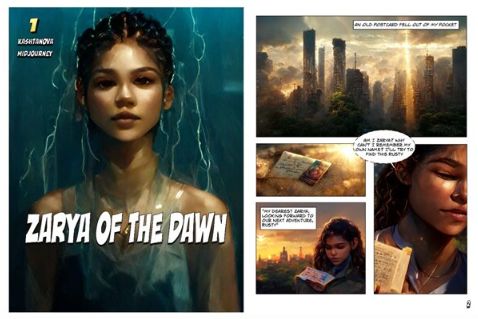
The text and page designs of Kashtanova's comic book were given copyright protection, while the distinctive images she created with Midjourney were not. Interestingly, Kashtanova did not hide the ball, listing Midjourney as a co-author. The problem is that the Copyright Office did not initially understand the reference, a slightly embarrassing point it relegated to a footnote in its correspondence with Kashtanova.
Rather than doubling down like Thaler, who continued to insist his AI acted autonomously until it was too late to alter his strategy, Kashtanova and her lawyer submitted a revised application setting forth which elements of the comic were created with the assistance of AI and which were not.
Not only had Kashtanova conceived of the idea for the comic and written its text, she used Midjourney as a tool to create the illustrations for the comic and she designed the page layouts displaying the combined text and imagery. The Copyright Office had no problem registering the text or the "overall selection, coordination, and arrangement of the text and visual elements that make up the Work."
The Copyright Office refused to copyright the images Kashnatova created with Midjourney, however — not because she disavowed her role in the process as Thaler had done, but because, as the Copyright Office put it, Midjourney "generates images in an unpredictable way." Even as it acknowledged Kashnatova's role in the process, conceding that "additional prompts...can influence the subsequent images," the Copyright Office reasoned "the process is not controlled by the user because it is not possible to predict what Midjourney will create ahead of time." It is on this basis that the Copyright Office brusquely concluded, "Midjourney users are not 'authors' for copyright purposes."
Ouch.
I have yet to come across cases or law review articles that focus on "predictability" as a factor in the originality analysis. Regrettably, Kashtanova did not appeal, likely because her second effort to copyright her comic afforded her both the opportunity to cure what the Copyright Office said was a defective application for its lack of disclosure concerning the use of AI, as well as the ability to walk away with a copyright on the comic as title, as a written story and most importantly, as a compilation including the page layout and use of the illustrations as part of the design. She wasn't going to do any better bringing the matter up on appeal, but the end of her proceeding leaves us to wonder from where the Copyright Office derives its formulation that human creativity is synonymous with predictability of results from the chosen medium of expression.
Into the Lens
This absolutist stance very much resembles the way courts (and the public) reacted to the advent of photography beginning in the mid-nineteenth century. Cameras initially were pretty universally seen as machines, as products of science and technology. The notion of the photographer as an Author whose Writings were entitled to copyright protection was largely nonexistent during the first few decades of photography's path toward cultural ubiquity.
Instead of the camera being seen as an instrument in a human creative process, many early commentators viewed the human as an operator ancillary to a machine's mechanical process. An advertisement for Kodak's new mass market camera in 1889 best sums up this view of photography as an essentially autonomous process. Alongside an image of the little black box of a device are the words, "You press the button, we do the rest."
Fifteen years earlier, in the 1884 case Burrow-Giles Lithographic Co. v. Sarony, the U.S. Supreme Court had an opportunity to answer the question of whether "pressing the button" on a camera was a sufficiently creative and original to constitute "authorship" for copyright purposes. Instead of tackling the issue directly, the Court opted to locate the requisite human creativity in the acts taken prior to pressing the button. More than 100 years later, courts still regularly do the same thing, pointing to "the photographer's selection of background, lights, shading, positioning of subject, and timing," in one district court case from 1998, and to "decisions regarding lighting, appropriate camera equipment and lens, camera settings and use of the...background" in a 2010 Eleventh Circuit case.
Although copyright initially struggled with the technology of photography, first seeing only the most composed photographs as original art, the prevailing view came to reflect that human aesthetic choices permeate a great many photographs. As Susan Sontag wrote, "[A]s people quickly discovered that nobody takes the same picture of the same thing, the supposition that cameras furnish an impersonal, objective image yielded to the fact that photographs are evidence not only of what's there but of what an individual sees." Or, as no less a legal authority than Judge Learned Hand stated, over 40 years after Sarony, "no photograph, however simple, can be unaffected by the personal influence of the author, and no two will be absolutely alike."
The Magic Lantern
I have been a paid subscriber to Midjourney probably for about 18 months, and I have easily created at least a thousand images. I have used it to make digital paintings, drawings, comics, website UI designs and more. The notion that Midjourney is not a creative tool but is instead an independent intelligence creating unpredictable images without meaningful human intervention is so wildly mistaken as to prompt the question whether any of the judges or Copyright Office staffers pushing us down this already trodden path has ever created a single image with the Midjourney or one of its peers.
I offer the following images merely by way of demonstrating that Midjourney can be a tool in the hands of an artist whose output, including when using Midjourney with intention, bears the impression of the artist and cannot reasonably be construed simply as the unpredictable result of an autonomous process standing apart from any non-incidental human involvement.
These first 2 are traditional mixed media works I created approximately 10 years ago.
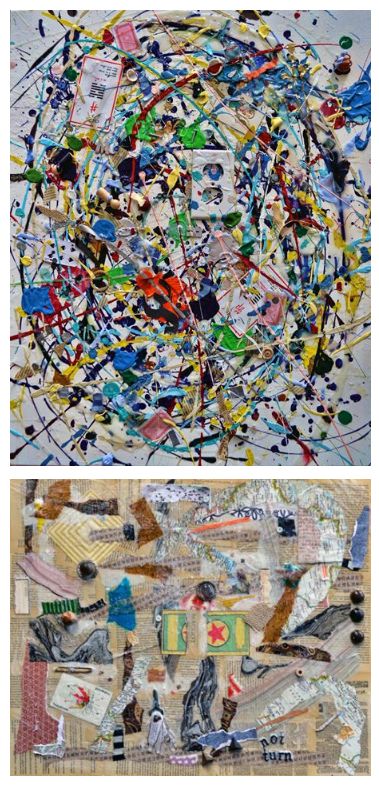
These second two were created with Midjourney perhaps a year ago.
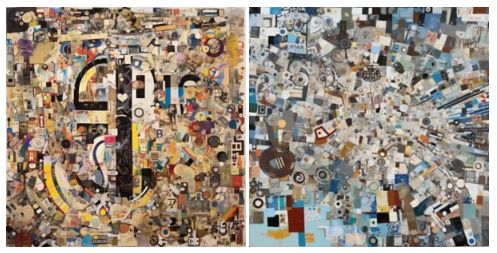
The final two are traditional mixed media works created by me this summer.
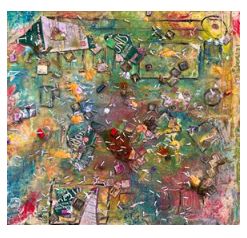
As far as I am concerned, and this is my main point, really, all these images reflect some bit of my artistic vision, whatever that is exactly, without regard to whether I made them out on my deck with paints and papers and scissors and pastels, or sitting at my kitchen table in front of my MacBook. I maintain that moments of significant uncertainty occur all the time when making traditional art with traditional materials. Anyone passingly acquainted with an art store has seen the staggering array of paints, gels, thinners, masks and other products available to painters working with acrylics, just as one example. There have been any number of evenings where I went to bed wondering what the art drying out on the deck would look like the next morning, having never before experimented with that precise method and mixture of materials. In this sense, Midjourney is arguably more predictable of a tool than a cartful of traditional art supplies—particularly as you learn Midjourney's "syntax" and gain experience working with it as a tool for creative expression.
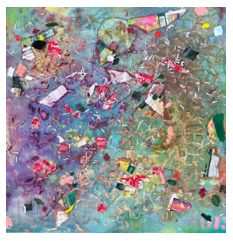
To create an illustration for this blog post, I used Midjourney. Being a habitual Midjourney user, I approached the task with an idea of the feeling I wanted to conjure and how I might get there. These images are offered in an effort to capture a bit of the experience of developing an image with Midjourney for a particular purpose and with a particular look and feel. I say "a bit" because creating an image that suits me as the human user often requires not only many iterations of the images themselves (often, dozens), but iterations employing different levels of zoom or based on evolving, refined text prompts, or that only alter certain user-prescribed regions of an image.
That said, I think the following series of images excerpted from the many dozens of iterations involved in their creation nevertheless hint at a creative process that is more nuanced and complex than either the Copyright Office or the U.S. courts have previously acknowledged.
The first image is the initial set of 4 images produced by Midjourney in response to the user's text prompt, which I have included here:
modern colorful painting with wet paint, random writing and marks, reflecting the theme that from cameras to AI, copyright law must evolve along with technology; no copyright symbols, scales of justice or robots –v 5.0
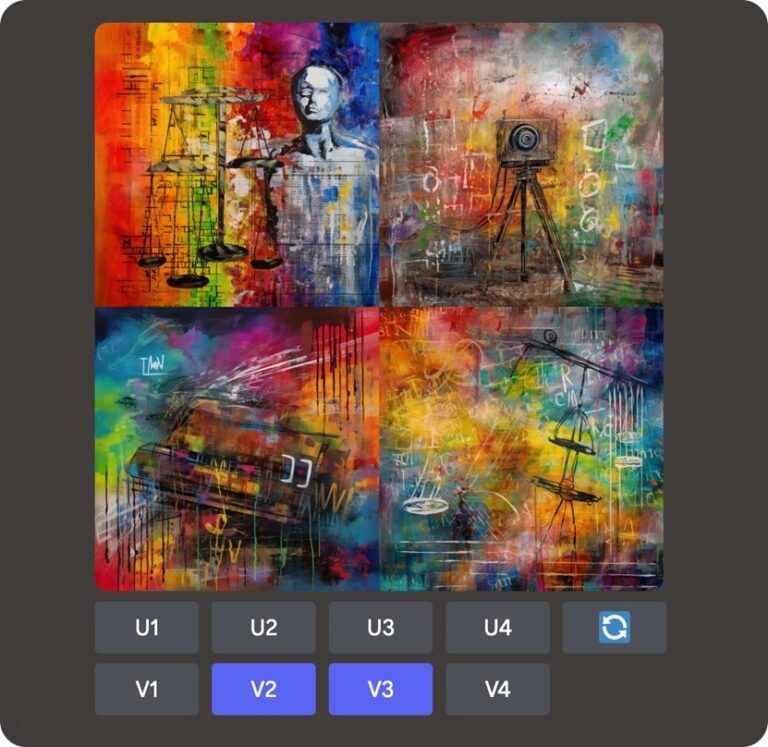
Astute observers familiar with Midjourney will notice that I bungled the "no" part of the prompt, which, to have the software properly exclude certain ideas and methods, needs to precede the word "no" with double-dashes, as such: "—no copyright symbols, scales of justice or robots." This human error is why 2 of the 4 initial images end up incorporating scales of justice; it is also more evidence that the AI is not doing anything autonomously based on its own intelligence—it's doing exactly what I tell it to do, even when I make a mistake in my own instructions.
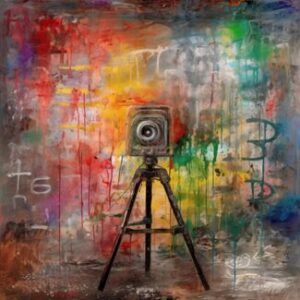
This image is the result of considerable iteration on the original image featuring a camera. I must have tried at least 20 variations just of the shape of the camera and its lens.
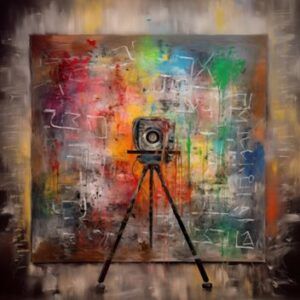
The significance of this image is how it utilizes Midjourney's "zooming" functionality, which, as a creative device, is indistinguishable from the ability to switch camera lenses and zoom in or out when taking photographs, one of the most often touted aspects of photography expressing human creativity and transcending the mere pushing of a button.
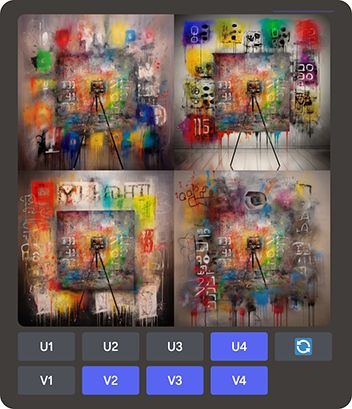
This last image shows some of the variations leading to the image ultimately selected to be the "cover" or main image featured at the beginning of this post. The point of including this one is not so much about its further exploration of the effects of using a virtual zoom lens, but rather to illustrate the moment when I decided, after essentially landing on one of the foregoing images as the cover image, to try something very different for no particular reason. The truth is, until we meet those autonomous, sentient beings, we humans, especially the ones prone to spontaneous creative expression, will be the most unpredictable "machines" of all.
To view the full article, click here.
The content of this article is intended to provide a general guide to the subject matter. Specialist advice should be sought about your specific circumstances.

